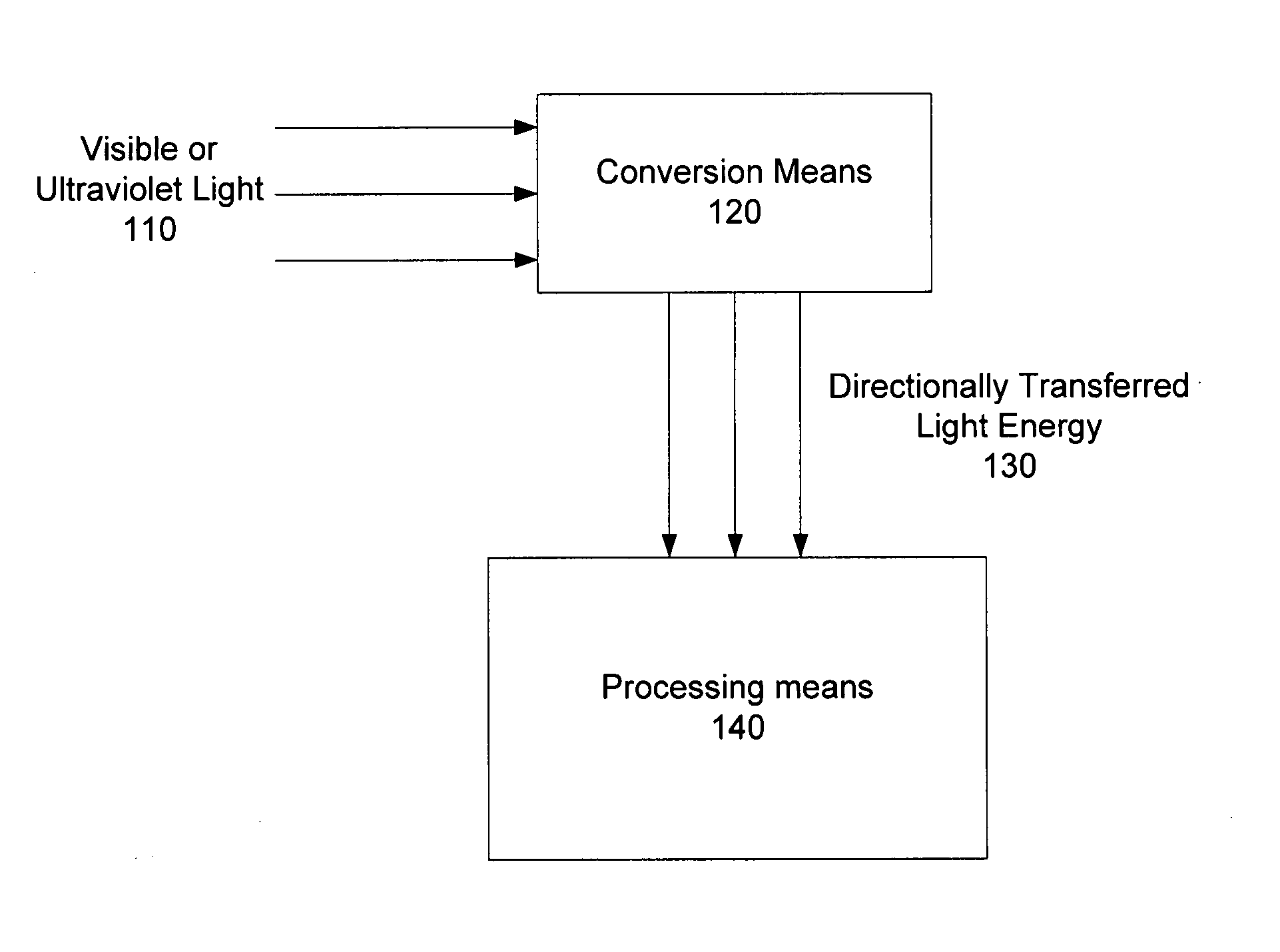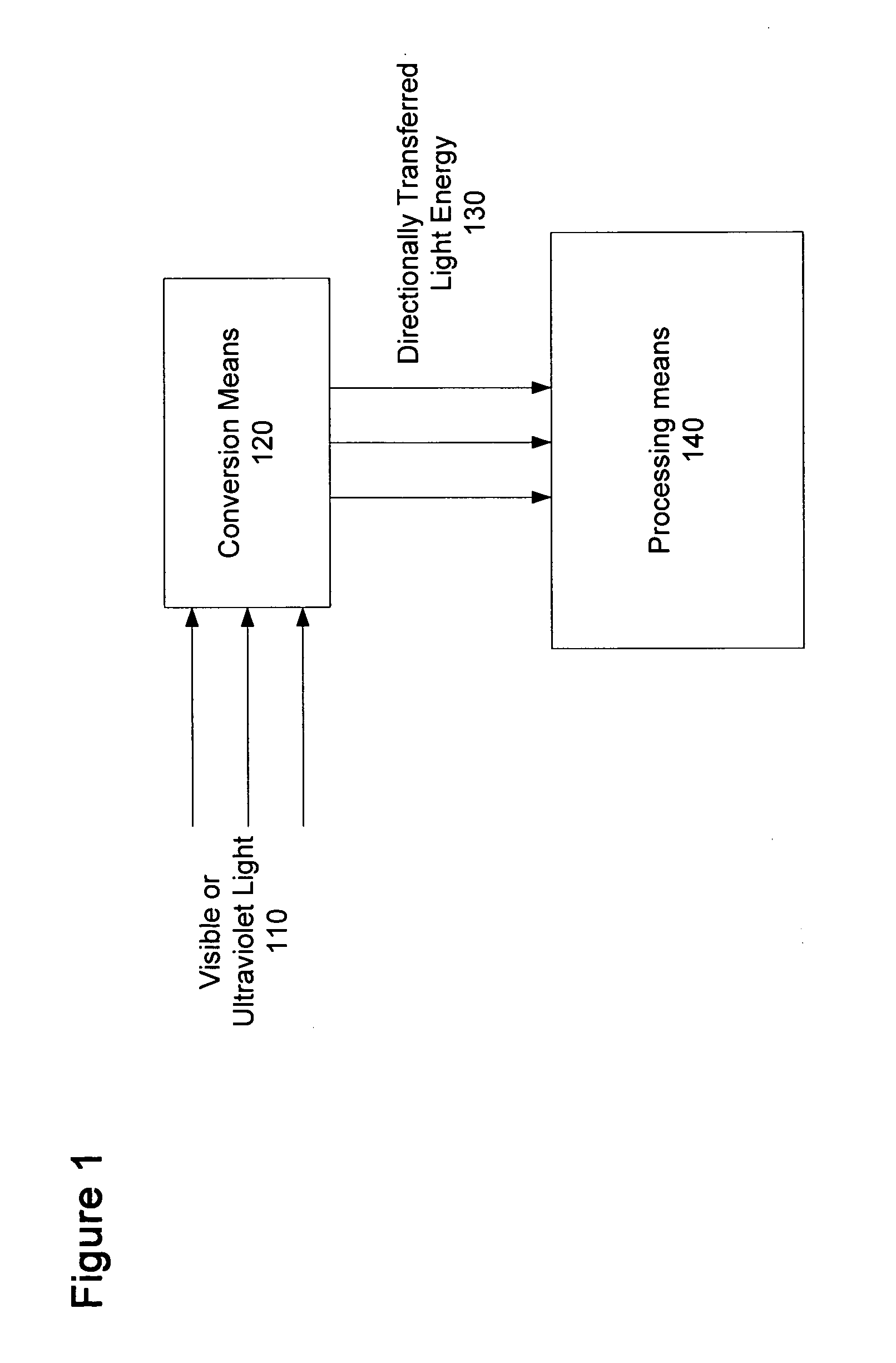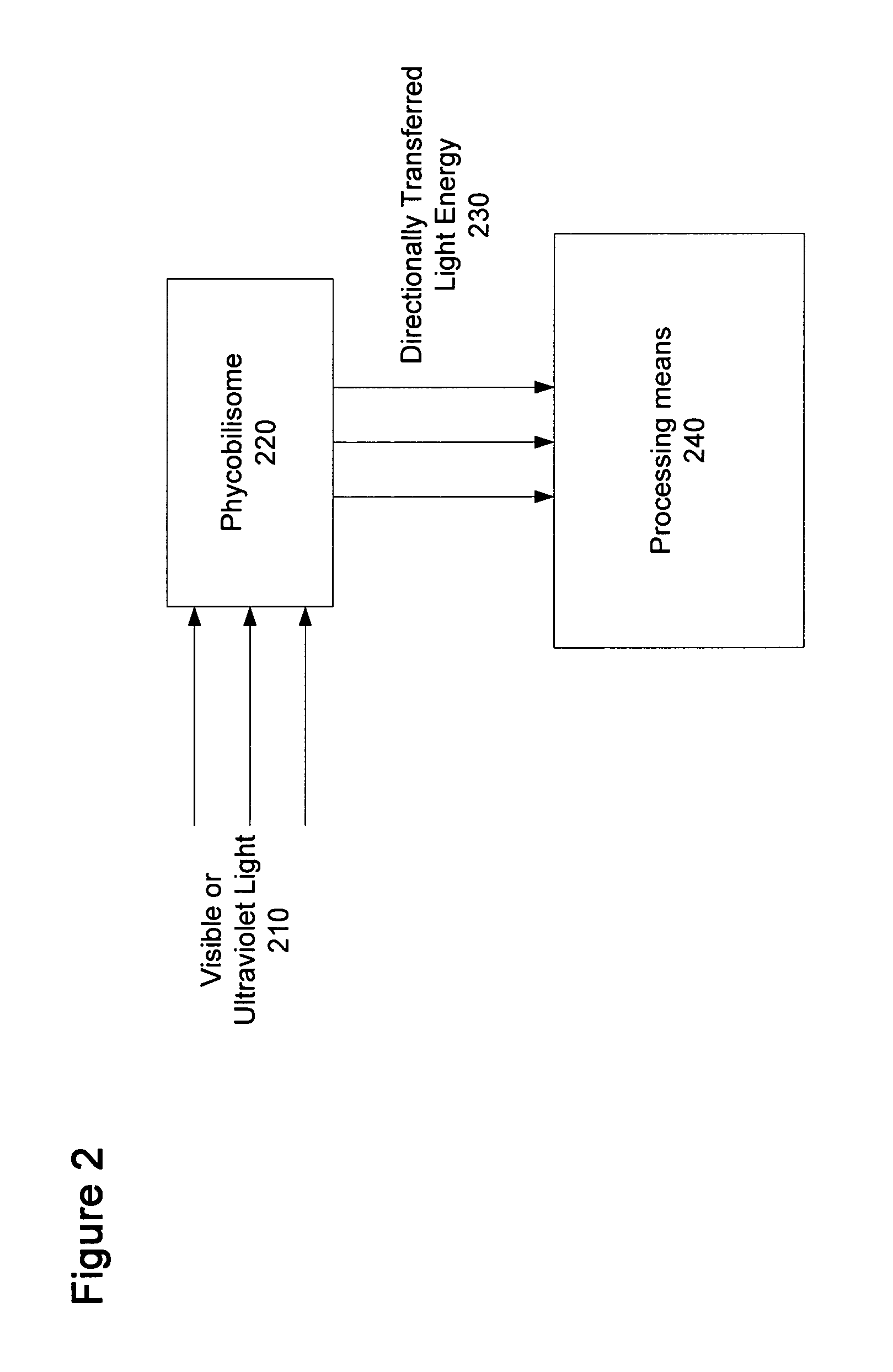Signal processing devices comprising biological and bio-mimetic components
a technology of signal processing and biological and biomimetic components, which is applied in the direction of optical radiation measurement, fluorescence/phosphorescence, nuclear engineering, etc., can solve the problem that the art has not recognized that these macromolecular assemblies could be similarly utilized
- Summary
- Abstract
- Description
- Claims
- Application Information
AI Technical Summary
Benefits of technology
Problems solved by technology
Method used
Image
Examples
example 3
ASSAY EXAMPLE 3
Displacement Assay Using Phycobilisome Conjugate Prebound to Immobilized Antigen
[0154]Washed BIOMAG-rabbit IgG (BIOMAG-RIgG) was pretreated with phycobilisome-GAM conjugate (molar ratio of 5 / 1 GAM / phycobilisome) for two hours at room temperature with mixing. The prebound reagent mixture was washed three times in assay buffer and resuspended to a particle concentration of 400 ug / ml. Five hundred microliter aliquots of prebound reagent were added to 12×75 mm test tubes. The assay was performed by adding 50 ul of sample (buffer with or without MIgG) to the mixture, vortexing, and incubating at room temperature for 60 minutes. After magnetic separation, 500 ul of supernatant was transferred to 2.5 mil 0. I M M for fluorescence measurements.
[0155]
Fluorescence (cps × 10−5)% of maximal[MIgG] (ng / test)E666displacementdisplacement010.53—110.720.196.11010.850.3210.410011.621.0935.31,00012.461.9362.510,00013.623.09100.0
[0156]A microtiter plate assay in displacement format using ...
example 4
ASSAY EXAMPLE 4
Sandwich (Immunometric) Immunoassay
[0158]Reverse sandwich assays were performed by preincubating MIgG with phycobilisome-GAM conjugate followed by capture of phycobilisome-GAM-MIgG complexes with BIOMAG-rabbit anti-mouse antibody (BIOMAG-RAM). This protocol maximizes assay sensitivity by allowing the primary (dynamic) immunoreaction to proceed in solution, improving assay kinetics and minimizing steric constraints. Alternatively, phycobilisome-GAM conjugate was used as a labeled second antibody to detect monoclonal antibody binding to immobilized rabbit IgG (RIgG) as follows.
[0159]Fifty microliters of buffer or mouse anti-rabbit antibody (MAR) was preincubated with 50 ul phycobilisome-GAM conjugate (20–80 ug / ml) for 30 minutes. Immune complexes were captured by addition of 100 ul of freshly washed BIOMAG-RIgG at a particle concentration of 10 mg / ml. The reaction was allowed to proceed for 60 minutes prior to magnetic separation. Fluorescence measurements were performe...
example 5
ASSAY EXAMPLE 5
Microtiter-Based Immunoassay With Visual Detection
[0161]Competitive Assays: White polystyrene MICROLITE™ 2 microtiter plates (Dynatech) were coated by passive adsorption for 15 hours at 2–80 C with 2–20 ug / ml MIgG in 10 mM sodium phosphate (pH 7.35). Supernatants were aspirated. Wells were incubated for 60 minutes at room temperature with 200 ul blocking buffer (10 mM phosphate-buffered isotonic saline (PBS, pH 7.4) containing 100 mM potassium phosphate (pH 7.35), 2 mM sodium azide and 2 mg / mil BSA) and washed six times with 250 ul wash buffer (PBS containing 1 mg / ml BSA). After the final wash, plates were inverted on paper towels and drained by blotting vigorously. Fifty microliters of assay buffer (PBS containing 100 mM potassium phosphate (pH 7.35), 2 mM sodium azide and 1 mg / ml BSA) or MIgG (10–1000 ng / well in assay buffer) was added to each well followed by 50 ul of phycobilisome-GAM at 0.5–10 ug / well. Plates were incubated for one hour with shaking at room tempe...
PUM
| Property | Measurement | Unit |
|---|---|---|
| molecular weights | aaaaa | aaaaa |
| concentration | aaaaa | aaaaa |
| ionic strength | aaaaa | aaaaa |
Abstract
Description
Claims
Application Information
 Login to View More
Login to View More - R&D
- Intellectual Property
- Life Sciences
- Materials
- Tech Scout
- Unparalleled Data Quality
- Higher Quality Content
- 60% Fewer Hallucinations
Browse by: Latest US Patents, China's latest patents, Technical Efficacy Thesaurus, Application Domain, Technology Topic, Popular Technical Reports.
© 2025 PatSnap. All rights reserved.Legal|Privacy policy|Modern Slavery Act Transparency Statement|Sitemap|About US| Contact US: help@patsnap.com



